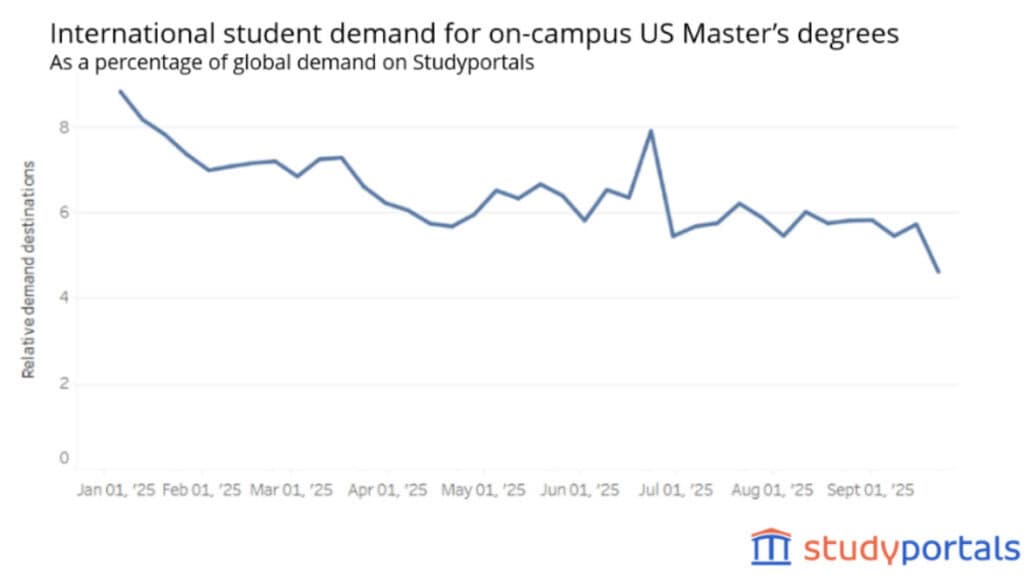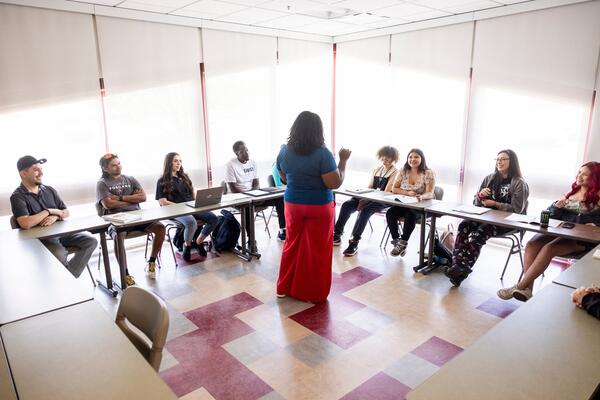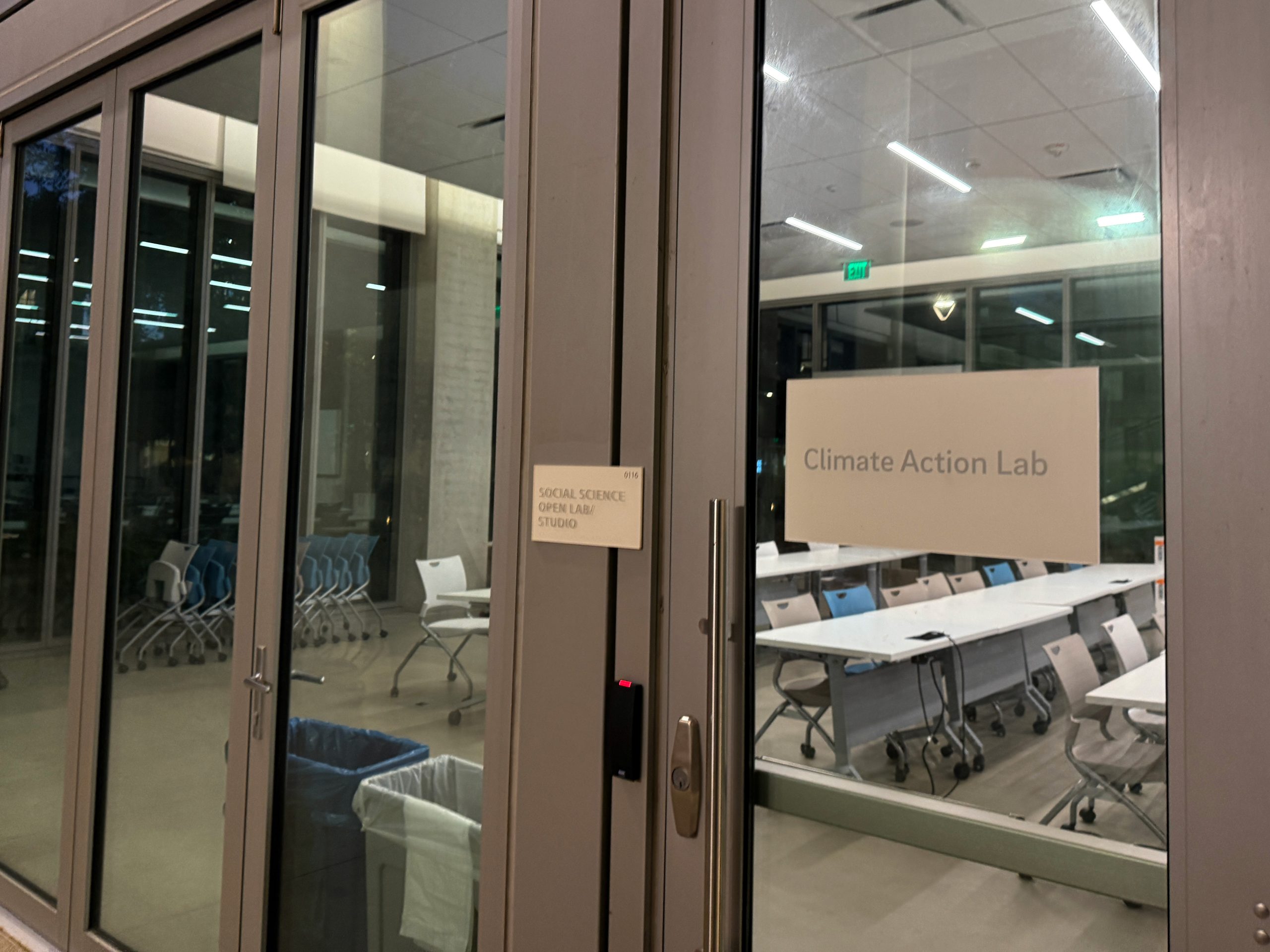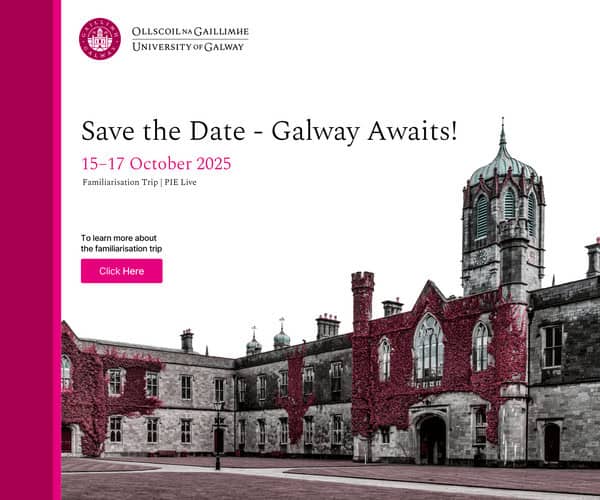Tag: Degrees
-

More 4-year colleges offer 2-year degrees to reach new groups of students (PBS NewsHour)
About one in four college students is both first-generation and from low-income backgrounds, making the path to a college degree especially challenging. At Boston College’s Messina College, a new, two-year, fully residential associates degree program, a wide range of support is helping change that. John Yang visited the campus to learn more as part of our ongoing series, Rethinking College. -

Strategic Planning for Legacy Programs: Rejuvenating Degrees
Don’t Let Legacy Programs Stall Your Growth
In higher education today, generating buzz around new program launches is often viewed as the key to growth and market relevance. While there’s nothing wrong with investing in new programs when it makes sense, institutions tend to do so at the expense of existing offerings — including those that built their reputation. Yet legacy programs, when strategically audited and repositioned, can become some of the strongest assets in an institution’s portfolio.
The challenge is that these programs often don’t receive the same level of attention or investment as new launches. Over time, many become overshadowed — not necessarily because they’ve lost relevance, but because the institution’s focus has shifted. Without consistent evaluation and modernization, the programs may begin to stagnate — enrollments flatten, marketing efforts diminish — while they continue to drain resources and faculty energy.
At the same time, legacy programs often hold unique advantages that newer offerings lack: established reputations, loyal alumni networks, and faculty with deep expertise. When they’re reexamined and repositioned through a strategic lens — leveraging internal data, market insight, and refreshed messaging — legacy programs can drive renewed growth in an increasingly competitive marketplace.
Auditing Programs for Their Growth Potential
A deliberate, data-informed audit of an institution’s programs can be the first step toward revitalizing those that are underperforming. A well-designed audit doesn’t just identify weaknesses — it also can uncover opportunities for renewal and growth.
A program life cycle audit assesses the current health of existing programs and tracks their performance over time. Key metrics in an audit might include:
- Enrollment and retention trends, to gauge the program’s long-term viability
- Course completion and graduation rates, as indicators of students’ satisfaction and support
- Employment outcomes, to measure the program’s industry relevance and career alignment
- Faculty-learner ratio, to ensure efficient use of instructional resources
- Program search demand trends, to gauge the market’s interest in the program
This process helps institutions identify whether their legacy programs are declining, stable, or experiencing renewed interest. These insights enable academic leadership teams to direct resources toward the programs that are most likely to drive growth — or sunset programs that no longer advance the institution’s goals.
Audits shouldn’t rely solely on internal data. Comparing a program’s performance results with market demand data — such as regional job growth projections and competitors’ offerings — can clarify what the program’s challenges are and whether they stem from internal execution or broader shifts in the field.
Measuring Program-Market Fit
Analyzing a program’s market fit is just as important as evaluating its internal performance. It can help institutions decide which legacy programs need retooling, which ones are suitable for scale, and which ones should be phased out.
A program’s market fit analysis doesn’t have to be overly complex. It can begin with three fundamental questions:
- Is there still demand?
The analysis should start with a review of labor market data, industry trends, search trends, and alumni outcomes to determine whether a particular field remains robust or if demand is shifting toward other subjects or credentials. - How does our program compare?
The next step is to assess what other institutions are offering in terms of delivery format (such as in-person versus online learning), curriculum, and pricing for similar programs. Understanding the competitive landscape helps identify areas where an institution’s program overlaps with others and where there may be opportunities to differentiate. - Does the program align with our institutional strengths?
Legacy programs often reflect areas where the institution already has deep expertise or established credibility. If those strengths still align with current market demand, they can serve as a solid foundation for a program’s revitalization rather than a reason for its retirement.
Evaluating these three dimensions helps determine whether a program needs a full-blown relaunch or a more subtle refresh. The goal isn’t to reinvent for the sake of reinvention. It’s to make sure that each offering continues to serve students while also supporting the institution’s objectives.
Relaunching Programs With Purpose: Marketing Strategies
When a legacy program still holds value but needs renewed visibility, a structured relaunch can help ensure its continued relevance. Effective relaunches align academic updates, marketing strategy, and admissions communication so that all teams are working toward the same goal: positioning the program for growth.
A comprehensive relaunch checklist can help guide this process. Elements to consider include:
- Program curriculum and delivery updates that reflect today’s learning preferences — such as hybrid or online models to accommodate adult learners — and industry expectations
- Consistent messaging across marketing and admissions, ensuring that both internal and external audiences understand what’s new
- Refreshed and tested marketing materials, including program pages and collateral materials that articulate outcomes, flexibility, and value to prospective students
Refreshing a program’s branding and positioning is a crucial step. Students’ needs evolve, so the program’s story should evolve too. Simple adjustments — such as updating program names for clarity, refining messaging to align with search trends, or highlighting regional workforce connections — can make legacy programs more discoverable and relevant.
Faculty also play a vital role in rebranding. Leveraging their expertise lends authenticity and authority to program relaunches. Featuring their research and industry partnerships in marketing materials reinforces the program’s real-world impact and signals that it’s grounded in experience, not just theory.
Key Takeaways
- New program launches aren’t the only pathway to growth. Sustainable success also stems from repositioning existing programs.
- Strategic audits of legacy offerings that assess their long-term performance and market fit enable your institution to relaunch them with intention.
- Institutions that regularly review and refresh their degree portfolios are better positioned to achieve scalable, market-responsive growth while honoring the programs that built their foundation.
Reinvigorate Your Programs — and Your Growth Strategy
Archer Education partners with dozens of institutions to help them launch new programs and revitalize existing ones to amplify their visibility and drive real growth. In a competitive market, data-driven program strategies enable greater institutional alignment and better market fit.
Contact our team today and let us help you rejuvenate your degree portfolio.
-

How degrees got so expensive – Campus Review
Prime Minister Bob Hawke watching on as Treasurer Paul Keating delivers the federal budget at Parliament House, Canberra, 19 August, 1986. Picture: Alan Porritt.
Australians think students are being asked to pay far too much for their degrees.
Please login below to view content or subscribe now.
Membership Login
-

Where are tomorrow’s teachers? Education degrees drop over 2 decades.
This audio is auto-generated. Please let us know if you have feedback.The number of education degrees awarded in the U.S. steadily decreased in the nearly two decades between 2003-04 and 2022-23, according to a new analysis of federal data by the American Association of Colleges for Teacher Education.
Bachelor’s degrees in education dipped from 109,622 annually to 90,710 while master’s degrees declined from 162,632 to 143,669 in that time span, AACTE said in its report on data from the U.S. Department of Education.
On Thursday, AACTE released a data dashboard based on these findings as well as two related reports. One covers the degrees and certificates conferred in education and the other highlights teacher preparation program trends.
As the Trump administration seeks to dismantle the Education Department and limit funding for federal education research, Jacqueline King, a co-author of the reports and an AACTE consultant, called for the agency to continue publishing research on teacher preparation programs.
“These reports provide a valuable check-up on the supply of new educators, and it is exciting that this year we can offer readers the opportunity to customize how they view the data through our new data dashboards,” King said in a Thursday statement. “It is essential that the federal government continue to provide the field — and the broader public — with this important information.”
Here are some standout figures on AACTE’s findings on the state of teacher preparation programs nationwide.
By the numbers
-3%
The one-year decline in bachelor’s degrees awarded in education from 2021-22 to 2022-23, the most recent year with available data.
-5%
The one-year decline in master’s degrees awarded in education from 2021-22 to 2022-23.
407,556.
The number of students enrolled in a teacher preparation program at a comprehensive higher education institution during the 2022-23 academic year.
611,296
The number of students enrolled in a teacher preparation program at a comprehensive higher education institution during the 2012-13 academic year.
124,428
The number of students enrolled in a teacher preparation program at an alternative teacher preparation program — ones not based at colleges — during the 2022-23 academic year. In the 2012-13 academic year, that number was just 43,099
112,913
The number of students who completed a teacher preparation program at a comprehensive college or university in the 2022-23 academic year. During the 2012-13 academic year, that number stood at 163,851.
16,899
The number of students who completed an alternative teacher preparation program not based at a college during the 2022-23 academic year. In 2012-13, that number was 15,550.
+9%
The growth in students completing alternative teacher preparation programs not based at higher education institutions between 2012-13 and 2022-23.
+44%
The growth in students who completed alternative teacher preparation programs based at colleges between 2012-13 and 2022-23.
29%
The share of education bachelor’s degrees awarded to non-White graduates in 2022-23, up from 23% in 2016-17.
33%
The percentage of education master’s degrees that went to non-Whites in 2022-23, up from 28% in 2016-17.
42%
The portion of education doctoral degrees earned by non-Whites in 2022-23, up from 37% in 2016-17.
Correction: A previous version of this article stated the wrong number of students enrolled in a teacher preparation program at a comprehensive higher education institution during the 2022-23 academic year. The correct enrollment figure is 407,556 students.
-

Students told degrees revoked in WSU hack – Campus Review
Western Sydney University (WSU) has been warned it may be in breach of its data safety obligations by the university watchdog after thousands of students and graduates received scam emails claiming their qualifications had been stripped.
Please login below to view content or subscribe now.
Membership Login
-

Global demand for US master’s degrees plunges by 60%
The data, collected from January 6 to September 28, aligns closely with the start of Donald Trump’s second presidential term and the ensuing uncertainty around student visas and post-graduation work opportunities. It is based on the search behaviour of over 50 million prospective students on Studyportals.
“Prospective international students and their families weigh not only academic reputation but also regulatory stability and post-graduation prospects,” said Studyportals CEO Edwin van Rest: “Right now, those factors are working against institutions.”
Studyportals said the steep decline – dropping more than 60% in less than nine months – corresponds to proposed and enacted policy changes impacting student visa duration, Optional Practical Training (OPT) and H-1B work authorisation in the US.
Last week, the Trump administration shocked businesses and prospective employees by hiking the H-1B visa fee to $100,000 – over 20 times what employers previously paid. Days later, the government announced proposals to overhaul the visa system in favour of higher-paid workers.
Sector leaders have warned that OPT could be the administration’s next target, after a senior US senator called on the homeland security secretary Kristi Noem to stop issuing work authorisations such as OPT to international students.
Such a move would have a detrimental impact on student interest in the US, with a recent NAFSA survey suggesting that losing OPT reduces enrolment likelihood from 67% to 48%.
Meanwhile, roughly half of current students planning to stay in the US after graduation would abandon those plans if H-1B visas prioritised higher wage earners, the survey indicated.
“Prospective students are making go/no-go enrolment decisions, while current students are making stay/leave retention decisions,” said van Rest.
“Policy changes ripple through both ends of the pipeline, reducing new inflow and pushing out existing talent already contributing to US research, innovation and competitiveness,” he added.

Data: Studyportals The search data revealed a spike in interest at the beginning of July, primarily from Vietnam and Bangladesh, and to a lesser extent India and Pakistan. Experts have suggested the new Jardine-Fulbright Scholarship aimed at empowering future Vietnam leaders could have contributed to the rise.
Meanwhile, Iran, Nepal and India have seen the steepest drops in master’s demand, declining more than 60% this year to date compared to last.
While federal SEVIS data recorded a 0.8% rise in international student levels this semester, plummeting visa arrivals and anecdotal reports of fewer students on campus suggest the rise was in part due to OPT extensions – individuals who are counted in student totals but who are not enrolled on US campuses or paying tuition fees.
Beyond the immediate financial concerns of declining international enrolments for some schools, van Rest warned: “The policies we adopt today will echo for years in global talent flows.”
The UK and Ireland have gained the most relative market share of international interest on Studyportals – both up 16% compared to the same period in 2024. Australia, Austria, Sweden and Spain all experienced a 12% increase on the previous year.
In the US, international students make up over half of all students enrolled in STEM fields and 70% of all full-time graduate enrolments in AI-related disciplines, according to Institute of International Education (IIE) data.
The policies we adopt today will echo for years in global talent flows
Edwin van Rest, Studyportals
What’s more, universities with higher rates of international enrolment have been found to produce more domestic STEM graduates, likely due to greater investment in these disciplines, National Foundation for American Policy (NFAP) research has shown.
Last year, graduate students made up 45% of the overall international student cohort (including OPT), compared to undergraduate which comprised roughly 30%, according to IIE Open Doors data.
Universities with higher proportions of overseas students have been found to produce more domestic STEM graduates, likely due to greater investment in these disciplines, National Foundation for American Policy (NFAP) research has shown.
The news of plummeting international demand comes as domestic enrolments are declining, with less high school graduates entering college education and an overall demographic shrinking of university-age students.
In a recent survey by the American Council on Education (ACE), nearly three quarters of college leaders said they were concerned about enrolment levels this semester, with 65% moderately or extremely worried about immigration restrictions and visa revocations.
-

Bachelor’s Degrees Unaffordable for Most Low-Income Students
The high cost associated with college is one of the greatest deterrents for students interested in higher education. A 2024 survey by Inside Higher Ed and Generation Lab found that 68 percent of students believe higher ed institutions charge too much for an undergraduate degree, and an additional 41 percent believe their institution has a sticker price that’s too high.
A recent study by the National College Attainment Network found that a majority of two- and four-year colleges cost more than the average student can pay, sometimes by as much as $8,000 a year. The report advocates for additional state and federal financial aid to close affordability gaps and ensure opportunities for low- and middle-income students to engage in higher education.
Methodology: NCAN’s formula for affordability compares total cost of attendance (tuition, fees, housing, etc.) plus an emergency reserve of $300 against any aid a student receives. This includes grants, federal loans and work-study dollars, as well as expected family contribution and the summer wages a student could earn in a full-time, minimum-wage job in their state. Housing costs vary depending on the student’s enrollment: Bachelor’s-granting institutions include on-campus housing costs, and community colleges include off-campus housing rates.
A graphic by the National College Attainment Network demonstrating how the organization calculated affordable rates for the average college student. National College Attainment Network
Costs that outweigh expected aid and income are classified as an “affordability gap” for students.
A recent Inside Higher Ed and Generation Lab survey of 5,065 undergraduates found that 9 percent of respondents said an unexpected expense of $300 or less would threaten their ability to remain enrolled in college.
The total sample size covered 1,137 public institutions, 600 of which were community colleges.
Majority of colleges unaffordable: Using these metrics, 48 percent of community colleges and 35 percent of bachelor’s-granting institutions were affordable during the 2022–23 academic year. In total, NCAN rated 473 institutions as affordable.
Comparative data from 2015–16 finds slightly more community colleges were affordable then (50 percent) than in 2022–23 (48 percent), but that the average affordability gap, or total unmet need, has grown from $246 to $486.
Among four-year colleges, more public institutions were affordable in 2022–23 than in 2015–16 (29 percent) and the average affordability gap shrank slightly, from $1,656 to $1,554. The data indicates slight improvement in affordability metrics but highlights challenges for low-income students interested in a bachelor’s degree, according to the report.
NCAN researchers believe the $400 increase in the maximum Pell Grant in 2023 helped lower costs per student at bachelor’s-granting institutions, but community colleges appear less affordable due to the loss of HEERF funding and the increase in cost of attendance due to rising housing costs.
Affordability ranges by states: Access to affordable institutions is also more of a challenge for students in some regions than in others. NCAN’s analysis found that 14 states lacked a single institution with an affordable bachelor’s degree program for low-income students. In 27 states, 65 percent of public four-year colleges were unaffordable.
For two-year programs, five states lacked an affordable community college. Some states had a small sample (fewer than five) of community colleges analyzed; Delaware and Florida had no community colleges in NCAN’s sample.
In Kentucky, Maine and New Mexico, 100 percent of the two-year colleges analyzed were found to be affordable for students, along with at least 80 percent of the bachelor’s degree–granting institutions in those states.
Students pursuing a bachelor’s degree in New Hampshire ($8,239), Pennsylvania ($8,076) and Ohio ($5,138) had the largest affordability gaps. For community colleges, students in New Hampshire ($11,499), Utah ($7,689) and Pennsylvania ($4,508) had the greatest unmet need.
Conversely, some states had aid surpluses, which can help address other expenses associated with college, including textbooks and transportation.
Cost isn’t the only barrier to access, however. “For many students who live in rural or remote areas, far from the postsecondary institutions in their state, college may remain inaccessible,” the report noted.
Based on the data, NCAN supports additional funding for higher education at all levels, federal, state and local, to provide students with financial aid.
Get more content like this directly to your inbox. Subscribe here.
-

Cut Degrees in Low Demand
In the past, lawmakers have pressured colleges and universities to cut the number of degrees they offer through measures such as publicly criticizing institutions or simply slashing funding and letting institutions figure out where to cut.
But at least three Republican-dominated states—Indiana, Ohio and Utah—passed specific laws this year that push institutions to eliminate degree programs that graduate few students. In a similar vein, Texas passed a law going after academic minors and certificate programs with low enrollments. It worries faculty and scholarly groups, who stress that the number of majors in a program isn’t the only or best way to gauge its worth.
“Campuses are forced to respond to legislative mandates that have arisen from a narrow understanding of what higher education is,” said Paula Krebs, executive director of the Modern Language Association. Students who pursue public higher education will be “getting a reduced version of what a degree should be,” she said.
Robert Kelchen, a professor of higher education at the University of Tennessee at Knoxville, said the move reflects the broader trend of “legislatures getting more involved in academic affairs issues that have historically been either done through shared governance or done through institutional leadership.”
“It’s just another sign that the era of ‘trust the universities, they’re doing the right thing’ has long since passed,” Kelchen said.
And Tom Harnisch, vice president for government relations at the State Higher Education Executive Officers Association (SHEEO), said these laws are “driven in part by the need to direct scarce resources to higher-demand programs in order to meet state workforce needs.” He said some humanities programs may be targeted for political reasons, but the laws are also the latest evolution of a long-standing discussion in higher ed over what programs to offer.
“It’s a very difficult conversation to have, but what we’ve seen over this legislative session is that the state legislators have been more aggressive in trying to shape this conversation,” Harnisch said. “More states have been involved in the inner workings of academia—more so than any time in recent memory.”
Minimum Requirements
Ohio’s sprawling new public higher education overhaul law, Senate Bill 1, mandates a lot—from requiring institutions to post undergraduate course syllabi online to banning diversity, equity and inclusion offices. But amid its pages detailing requirements for faculty evaluations, post-tenure review and more lies a short section that could have an even bigger impact on faculty jobs and which degrees students can pursue.
“A state institution of higher education shall eliminate any undergraduate degree program it offers if the institution confers an average of fewer than five degrees in that program annually over any three-year period,” the law says.
Colleges and universities can appeal to Ohio’s higher education chancellor to save these programs, but even if the chancellor—appointed by the Republican governor—grants a waiver, he gets to set the terms under which the program “may conditionally continue.” Well before SB 1 took effect last month, the University of Toledo announced in April that, in order to comply, it will stop offering bachelor’s degrees in Africana, Asian, Middle East, religious, disability and women’s and gender studies, as well as degrees in Spanish, philosophy and data analytics.
A month after Ohio’s General Assembly passed SB 1 in March, Indiana’s Legislature passed a state budget bill filled with higher ed provisions—including one similar to its Midwest neighbor’s. The Indiana law sets minimum thresholds for different degree programs to avoid termination. Associate programs must graduate an average of at least 10 students annually over three years, while the threshold is 15 students for bachelor’s degree programs, seven for master’s degree programs and three each for education specialist programs and doctorate programs.
While the law, House Bill 1001, says institutions can ask the Indiana Commission for Higher Education for exceptions, that agency said universities already plan to eliminate or consolidate more than 400 programs—roughly one-fifth of their degree offerings statewide. The list of programs being cut at various institutions includes multiple K–12 teacher training programs, foreign languages and Africana, religious and women’s and gender studies degrees, as well as economics, math and electrical, mechanical and computer engineering.
Utah took a more complex, but still blunt, approach. In March, its GOP-controlled Legislature passed House Bill 265, which cut 10 percent of public institutions’ state-funded instructional budgets—$60 million in total. But the law said colleges and universities could win the money back for “strategic reinvestment” in programs based on their enrollment, completion rates and “localized and statewide workforce demands,” among a few other factors.
Last month, the flagship University of Utah, which says it’s shouldering more than a third of the initial $20 million in statewide cuts, announced it’s planning to cut 94 programs across 10 colleges and schools. According to a slideshow posted by the university, the losses will include master’s degrees in Middle East studies, educational psychology, modern dance, audiology, marketing, neurobiology and bioengineering.
To earn back money from the Legislature, the university says it will reinvest in the “high impact” and “workforce-aligned” areas of biotechnology, engineering, “responsible AI,” behavioral health, nursing and simulation, and “civic engagement”—which the presentation described as including “new initiatives focused on American federalism and civic responsibility, and another on civic discussion and debate.”
Utah Valley University, which offers traditional community college programs along with higher-level degrees, said in its presentation that it’s cutting a bachelor’s in aerospace technology management and an associate degree in cabinetry and architectural woodwork, among other offerings. At the same time, it’s reinvesting in an “applied AI institute,” engineering, chemistry, health, accounting, construction management, written communication and more.
In Texas, the Legislature has passed the least direct of the laws targeting programs. Senate Bill 37 doesn’t demand that institutions make cuts to traditional majors, but it requires that they review minors and certificate offerings every five years “to identify programs with low enrollment that may require consolidation or elimination.”
Weeding Out
Mark Criley, a senior program officer in the Department of Academic Freedom, Tenure and Governance at the American Association of University Professors, said the laws are “part of a growing trend among state legislatures to insert themselves in university governance in ways that go beyond their expertise.”
Criley compared these laws—which push program cuts without requiring faculty input on what should be cut—to someone walking into a garden and saying they’re going to pull up every plant under a certain height. He said some of those shorter plants may be important to the health of the whole garden, or “about to bloom into something fantastic.”
“Without the opportunity for faculty involvement, what you’re doing then is, essentially, you’re pulling up all those plants while the gardener’s away,” Criley said. This “blunt instrument we’re talking about here isn’t a way of responsibly ensuring that universities serve their mission to the state.”
But Ohio senator Jerry Cirino, who filed SB 1 and now chairs the state’s Senate Finance Committee, told Inside Higher Ed that circumventing shared governance and faculty unions is part of the law’s point. Shared governance slows changes, he said, and Ohio faculty unions are so committed to protecting their members that they rarely cooperate with institutions trying to cut classes or programs that aren’t graduating enough students in order to justify employing faculty—often tenured faculty.
“How could the faculty be objective when it comes to making decisions that reduce faculty?” Cirino said, adding that more “business principles” should be practiced in universities.
“It’s supply and demand,” he said. “All we’re asking is for our institutions to practice what they teach in their business schools.”
But others criticized using simple metrics such as enrollment and number of graduates to decide which programs should be on the chopping block. Ohio and Indiana’s laws are based on average graduate numbers, while the Texas and Utah laws require institutions to look at enrollment.
“If the major is the coin of the realm, then languages are an easy target,” said Krebs, the Modern Language Association executive director.
Kelchen, the UT Knoxville professor of higher education, said that from a financial standpoint, what really matters is whether classes are full. A program with few majors could still attract students who are earning a minor or taking the classes for other reasons, such as to satisfy general education requirements.
Kelchen and Krebs both pointed out that universities in other states have cut programs even without legislative mandates; they noted West Virginia University, where the administration and Board of Governors ordered degree programs slashed in 2023.
“I think we can trace it back to West Virginia University and before, where it wasn’t a legislative mandate,” Krebs said of cuts to foreign language and other humanities programs.
Harnisch, of SHEEO, suggested it goes back even further, noting “deep program cuts” amid the Great Recession of 2008. Over the past decade, he said, states have tried to keep college affordable, and a growing economy and COVID-19–related aid packages helped.
But now, Harnisch said, multiple financial pressures are leading to “sharper program cuts and tuition increases.” After all, Indiana universities volunteered to eliminate 19 percent of degree offerings without requesting exemptions from the state, according to the Indiana Commission for Higher Education.
“I only see this trend increasing in the years ahead,” he said.



